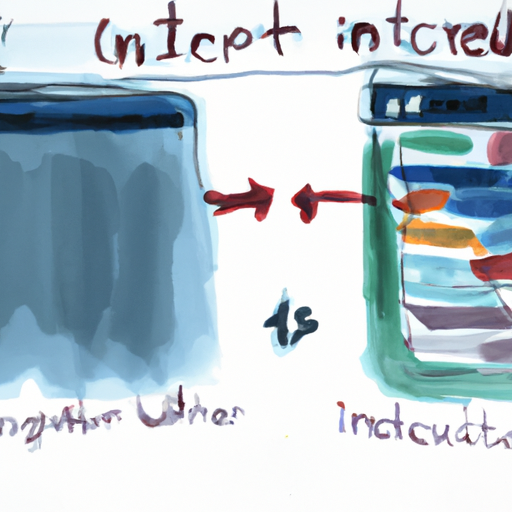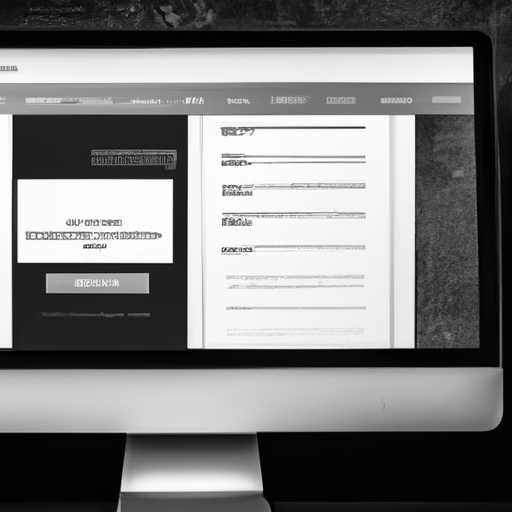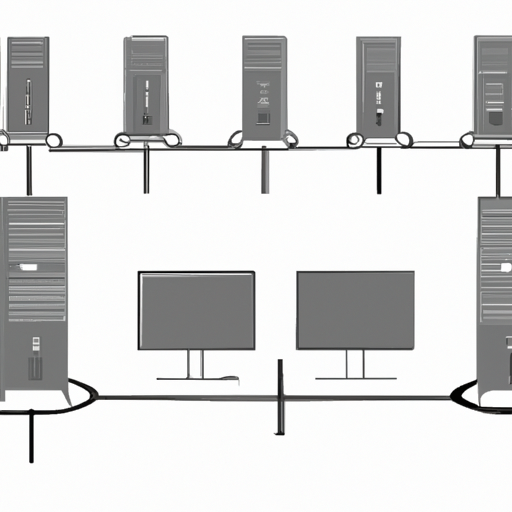TL;DR Full stack development involves building a web application from front-end to back-end. The front-end should have a responsive and user-friendly design, while the back-the back end should be efficient and functional.
Testing and debugging are important, as well as consideration of performance, scalability, and load balancing mechanisms.
Full stack development has become a crucial aspectof modern software engineering. With its ability to handle both the front-end and the back-end of an application, full stack development provides a complete and efficient solution for creating robust and scalable software.
However, the competencedevelopment stack evaluation can be a daunting task as it requires a deep understanding of the various components and considerations involved.
In this article, we will explore the key aspects of full stack development evaluation, including component understanding, front-end and back-end evaluation, strategy testing and troubleshooting, and evaluating performance and scalability.
By delving into these areas, we aim to provide a comprehensive guide to evaluating full stack solutions and ensuring long-term success in software development.
-
- 1.Understanding the components that fail.the full development drop
-
- 2.Evaluating key front-end considerations for Full Stack evaluation
-
- 3.Evaluating factorsback-end-end critiques in Full Stack evaluation
-
- 4.Testing and debugging strategies for evaluating Full Stack functionality
-
- 5.Evaluating performance and scalability of Full Stack solutions for successlong term
1. Understanding the components that break down Full Stack development
Full stack development refersto the process of creating a web application or software product from end-to-end. It encompasses all layers of the application, including the user interface, server logic, and database management.
To effectively evaluate full-stack development,it is essential to understand the components involved and how they work together.
The user interface (UI) is the visual part of the application that users interact with. It includes elements such as buttons, menus, and forms that allow usersto communicate with the application.
User interface evaluation involves evaluating responsiveness, ease of use, and overall design aesthetics. A well-designed user interface should be intuitive, visually appealing, and provide a seamless user experience.
In the back-end, full-stack development involves server logic, which handles data processing and manipulation.
This includes business logic, authentication, and integration with external services or APIs.server logic requires consideration of factors such as performance, scalability, security, and code quality.A robust backend.
2. Evaluating key front-end considerations for full-stack evaluation
When evaluating the front-endof a full stack, there are a few key considerations that need to be taken into account.
The frontend is the user-facing part of the application and plays a crucial role in providing a smooth and intuitive user experience.Here are some important factors to consider when evaluating the front end of a full stack
1.User Interface (UI) Design User interface design is essential because it directly influences the user’s perception of the application. It is important to evaluate the overall visual appeal, appearance and usability of the front end. The user interface should be pleasantaesthetically, coherent and intuitive, allowing users to easily navigate and interact with the application.
2.Responsive With the increasing use of mobile devices, it is essential that the backend is responsive and adaptable to different screen sizes.The app should be able to provide a consistent user experience across all devices, including smartphones, tablets, and desktops.Rating how good it is
3. The selected language
Should be suitable for the project requirements, scalable and have a strong developer community for support and resources.
There are different types of DBMS such as SQL (structured query language) and NoSQL (non-relational database)..The choice of DBMS depends on factors such as data complexity, scalability,
4. Testing and debugging strategies for evaluating full stack functionality
Testing and debugging are essential aspects of evaluating the functionality of the full stack. To ensure that all components of the stack work perfectly together, it is important to establish effective testing and debugging strategies.
One strategy is to performunit tests for each individual component of the entire stack. Unit tests focus on testing each component in isolation, making sure that it works as expected and returns the desired results.
By running unit tests for each component, developers can identify any issues or bugsat an early stage and can fix them before moving on to the next phase of development.
Integration testing is another important strategy for fully evaluating the functionality of the stack. This type of testing focuses on testingthe interaction between the different components of the stack.
It helps to identify any problems that may arise due to the integration of different technologies and ensures that they work seamlessly together.
By testing the integration, developers can detect compatibility issues, data transmission problems or any other problems that mayoccur when different components interact with each other.
5. Performanceand Scalability Evaluating Full Stack Solutions for Long-Term Success
When evaluating Full Stack solutions for long-term success, performance and scalability are key factors to consider. A full stack solution wouldit must be able to handle increasing user demands and adapt to future growth without sacrificing performance.
To evaluate the performance of a full stack solution, it is important to consider factors such as timeresponse time, throughput, and resource utilization.
Response time refers to the time it takes for the system to respond to a user request, while throughput measures the number of requests the system can handle in a given time frame.Resource utilization measures how efficiently the system uses its resources, such as memory and processing power.
Scalability, on the other hand, refers to the ability of a full stack solution to handle increasing workloadsor user requirements.
It is essential to assess whether the solution can scale horizontally (by adding more servers) or vertically (by upgrading hardware) to meet future needs.
The solution should also support load balancing mechanisms,to evenly distribute the workload across multiple servers, ensuring optimal performance.
In conclusion, evaluating full stack development is a complex process that requiresa deep understanding of the components involved, a careful evaluation of both front-end and back-end aspects, rigorous testing and debugging strategies, and consideration of performance and scalability.
By dividing the evaluation process into these key sections, the partsstakeholders can gain a comprehensive understanding of the strengths and weaknesses of a full stack solution.
It is important to note that no evaluation process is perfect and may require continuous monitoring and refinement to ensure long-term success.Ultimately, by following the guidelines outlined in this article, individuals and organizations can make informed decisions about full stack solutions that align with their specific pipelines and goals.
…..






